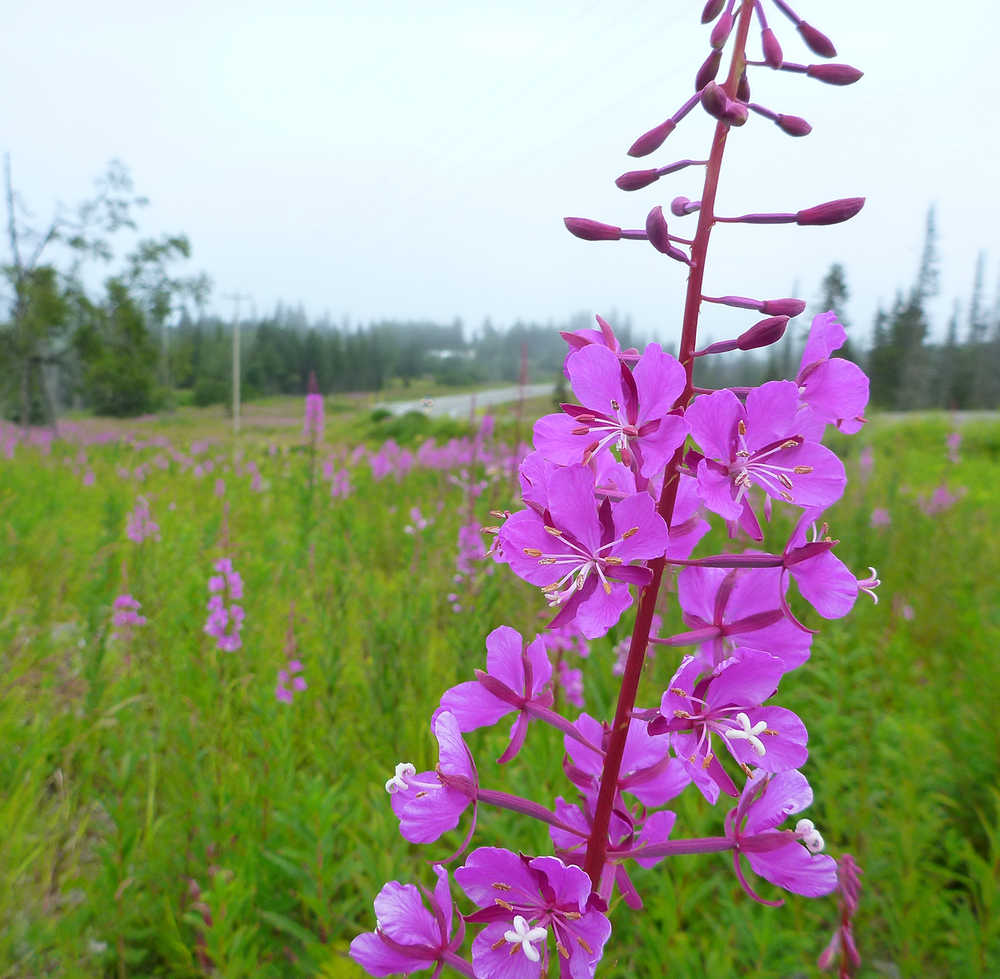The massive wildfire that recently engulfed a good chunk of the local landscape may look like a bleak, uninviting place for some time, but regenerative ecological forces are already at work. As we embrace the hard work, dedicated suppression efforts, and good fortune that resulted in a positive community outcome, many of our floral friends can rejoice in the opportunities of the fire-altered system.
Wildfire is nothing new to boreal spruce-birch forests, as these systems evolved with fire and are dependent on disturbance for regeneration. Many plant and wildlife species have adapted to fire disturbance, and their continued survival and success is dependent on it. Fire not only prompts regeneration of many plant species, it recycles mineral elements like nitrogen and phosphorus, and removes accumulated organic matter.
Wildfires are variable, with some areas burning so severely that only mineral soil is left, and other areas left with patchy vegetation or organic mat chunks. During a fire, vegetation either survives by chance or by adaptations like thick bark; by recolonizing from seed banks or seed transport by wind, flooding, or animals; or by sprouting new growth from underground roots or plant parts.
Reestablishment of ecological communities following a fire is variable in Alaska, but we understand general patterns of succession, and know what to expect around the Kenai Peninsula. Post-fire ecological succession generally follows a process of soil building and early colonization by mosses and liverworts, then wildlflowers and grasses, then deciduous shrubs and trees, and finally by conifers. Large fires in both 1947 (still the largest recorded wildfire on the peninsula at over 310,000 acres) and in 1969 left a legacy of patchy birch stands interspersed with spruce stands, structuring diverse wildlife habitat.
Plants that have fire-adapted traits are known as pyrophytes, and quite a few are found in our fire-evolved boreal forest system. Many species of moss and liverworts readily establish in patchy or severe fire areas, sprouting from wind-dispersed spores. These species help other species to establish by accumulating organic material like drifting leaves, twigs, and other organics, and holding moisture.
Horsetails are common in post-fire areas that were not hot enough to burn the rhizome, or underground stem. Every gardener in the region knows the persistence of these plants that sprout and sprout again despite attempts to remove them.
The most celebrated early post-fire gem is the morel mushroom, which for somewhat mysterious reasons tends to abundantly fruit in the first or second year following a wildfire. The fungus may possibly seeking new food sources or substrates to colonize, prompting a big surge in fruiting bodies to produce spores. Morels can be easily distinguished from non-edible look-alikes as they have cap and stalk as one unit. False morels have brain-like lobes, with a detached cap. As with any wild edible, consult experts and guides before attempting to harvest them.
Bluejoint reedgrass mainly regenerates after a fire from thick root mats, and also through prolific seeding adjacent to burned areas. This common grass species can compete with tree regeneration, leading to a complex set of potential long-term changes in forest composition.
The iconic fireweed is probably the best-known post-fire plant, incorporating its affinity for burned areas into its very name. This species has prolific light seeds that can travel large distances in wind. Vast patches of bright pink flowers are visible from considerable distances in the years following a fire.Unfortunately, many non-native flowers – such as the orange and yellow hawkweed and dandelions – display the same wind-dispersed prolific spread if there are seed sources following a fire. Monitoring for non-native species will take place to reduce invasions in recently burned areas.
Several shrub species, including dwarf birch, blueberry, lingonberry, and Labrador tea, will readily resprout in less severe burn areas from root crowns in partially burned or intact organic mat locations. Taller shrubs like willow, particularly Barclay’s willow and Scouler’s willow, sprout prolifically after fires. Alder can sprout, but tends to reseed in areas adjacent to fires to reestablish itself.
Deciduous tree species depend on fires for large-scale reestablishment. Paper (or Kenai) birch, an integral part of the forests here, readily grows on post-fire sites burned to mineral soil in vast patches from long-distance seed dispersal. Quaking aspen generally resprouts from root suckers which quickly grow in nutrient-rich post-fire soils. Cottonwoods, including both balsam poplar and black cottonwood, produce light tufted wind-dispersed seeds, and can resprout from lateral roots and even stems or branch fragments.
Black spruce is entirely fire-dependent for regeneration, as its resin-sealed cones require the heat of fire to melt and release seeds. Black spruce’s structure is very fire susceptible, with flammable low-growing short crowns that tend to burn completely in fires. Seeds are released between one to three years following a fire that kills the tree, and seedling growth can occur in both mineral and organic mat areas. White and Lutz spruce do not need fire to release seeds, but adjacent stands will produce large seed crops after a hot, dry summer to recolonize burned areas.
Post-fire landscapes can be eerie and solemn places, but within them is the pulse of new life and regeneration almost immediately following the destruction. As the landscape renews itself, creating fresh wildlife habitat for generations to come, we’ll have the chance to directly observe the ecologically fascinating process – and perhaps even harvest some delicious morels along the way.
Dr. Elizabeth (“Libby”) Bella is an ecologist at Kenai National Wildlife Refuge.

